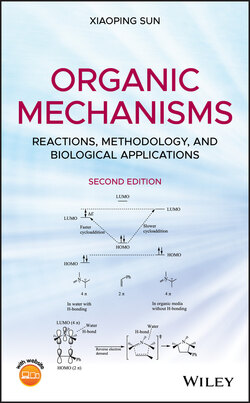Читать книгу Organic Mechanisms - Xiaoping Sun - Страница 27
1.6.3 The Bell–Evans–Polanyi Principle
ОглавлениеFor similar concerted reactions that take place at a certain given temperature, the activation energy (Ea) can be directly correlated to the reaction enthalpy (ΔH) as follows (the Bell–Evans–Polanyi principle):
(1.55)
where c1 and c2 are positive constants.
Equation 1.55 is applicable to both endothermic and exothermic reactions and can be employed to analyze the relative activation energies for similar reactions based on their reaction enthalpies. For endothermic reactions (ΔH > 0, Fig. 1.4b), the greater the energy gap (ΔH) between the reactant and product (the more endothermic), the higher is the activation energy Ea. For exothermic reactions (ΔH < 0, Fig. 1.4a), the greater the energy gap (the absolute value of ΔH) between the reactant and product (the more exothermic), the smaller is the activation energy Ea. The greater energy gap in an exothermic reaction makes the c1ΔH more negative. As a result, the Ea becomes smaller. Using this principle, one can directly relate the kinetics (activation energy) to the thermodynamics (enthalpy of the reaction) for similar chemical reactions.
